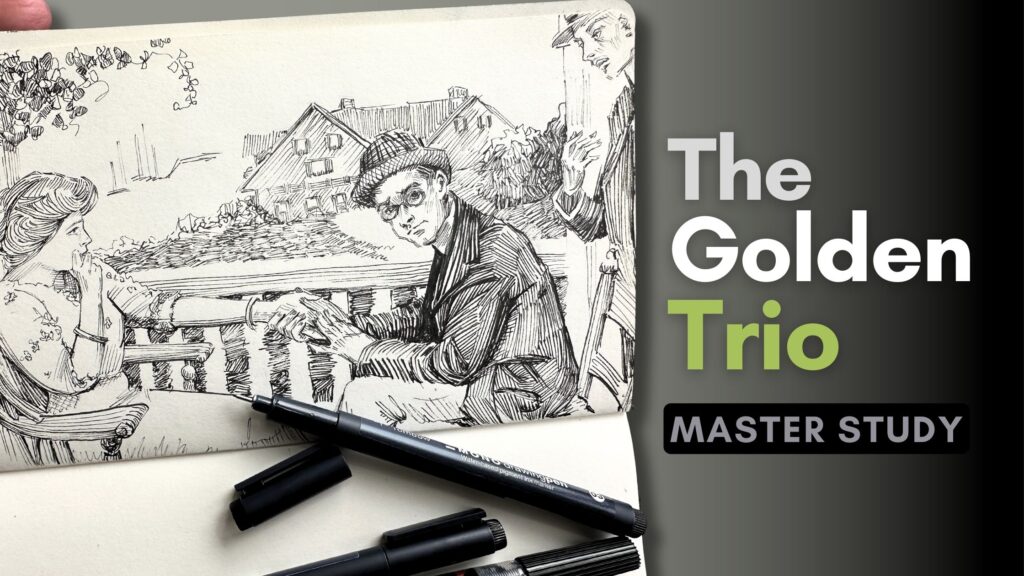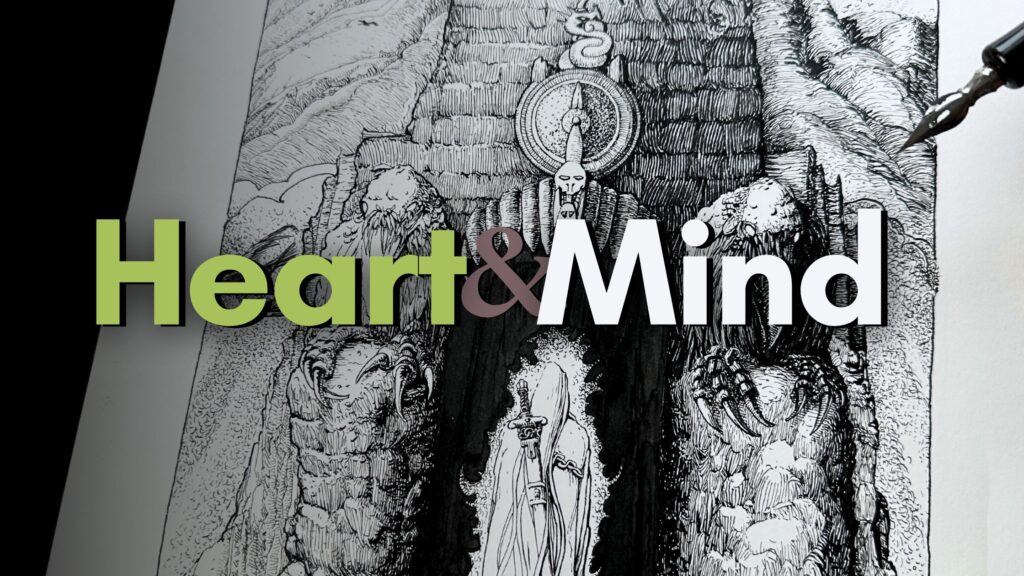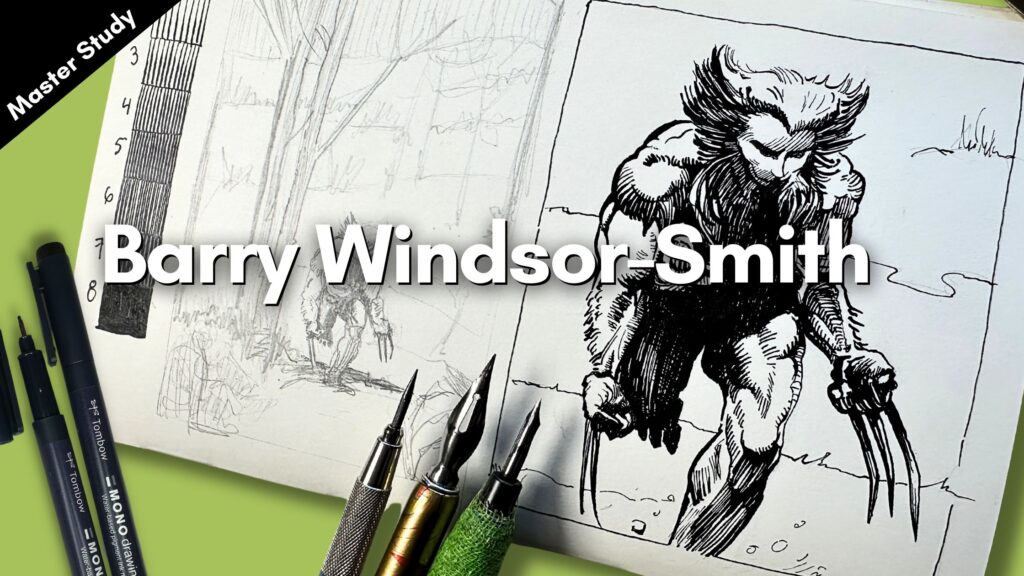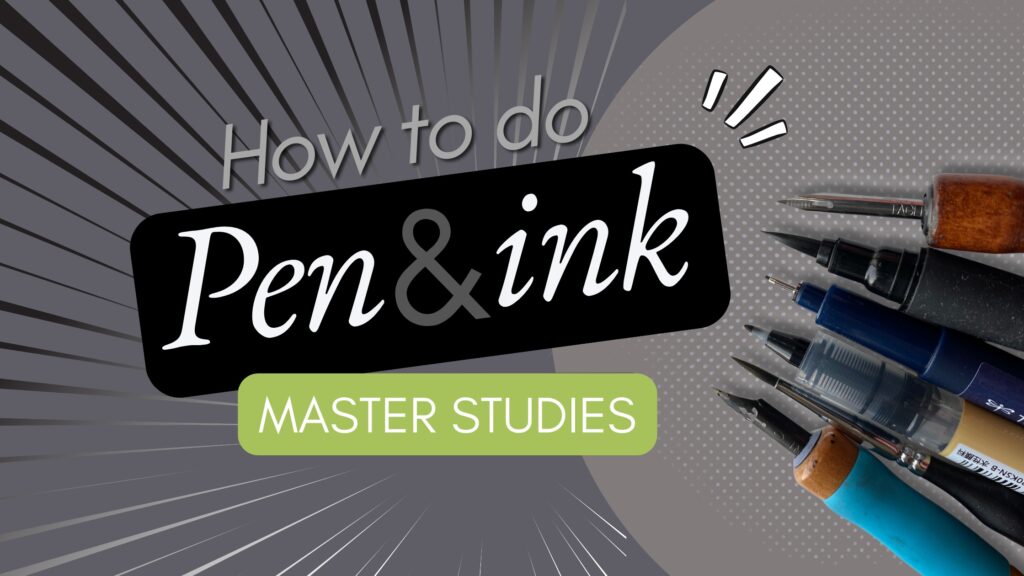Studies of 3 Masters
In this study of three pen and ink masters from the Golden Age era, Joseph Clement Coll, James Montgomery Flagg, and Charles Dana Gibson, I share what we can learn from their experience to grow inking skills.
// DISCLOSURE: I earn a small commission when you use my affiliate links to make a purchase. Learn more about the affiliate disclosure by reading the Terms.
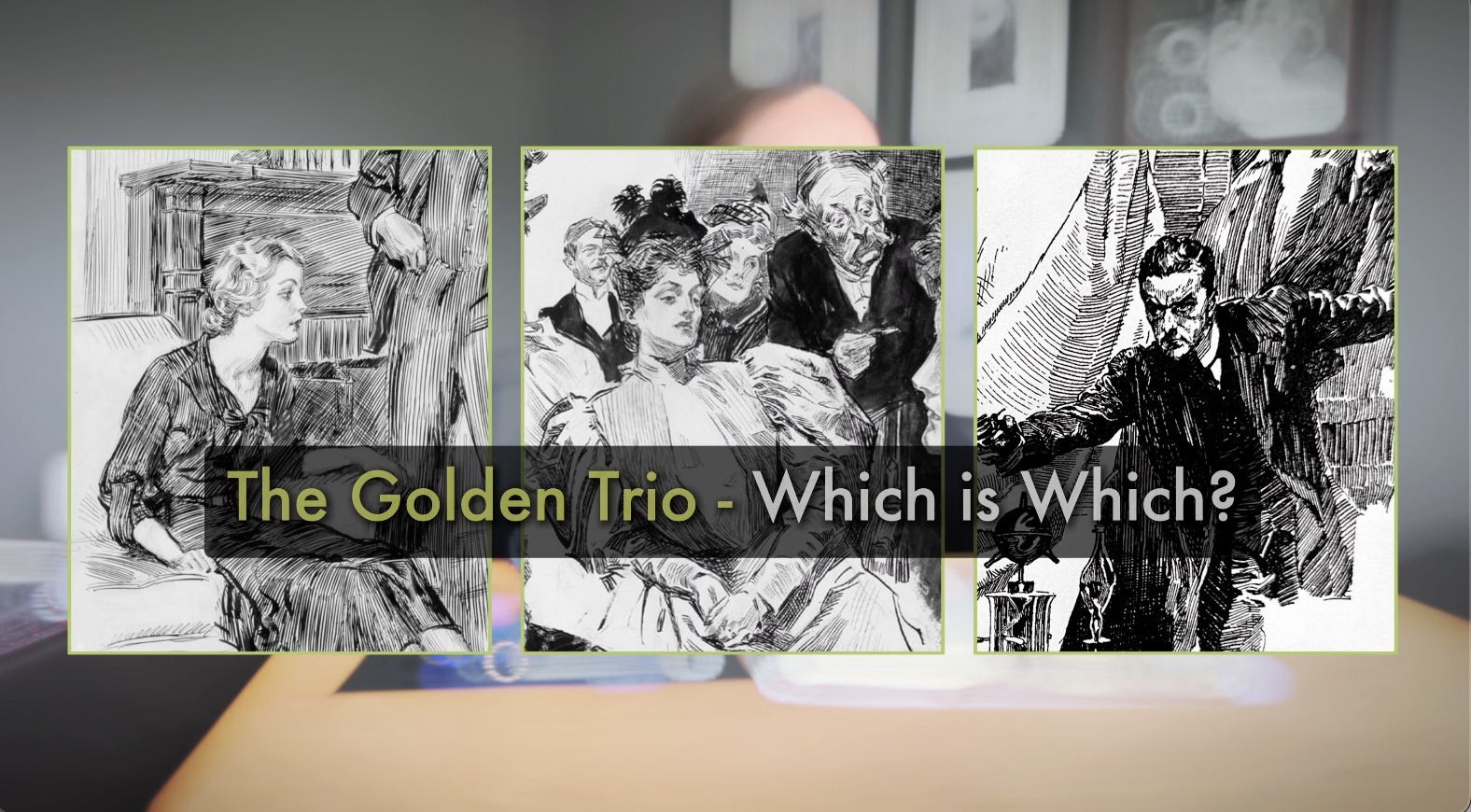
Quick Facts
From these ‘quick facts’ and analysis of their pieces, you’ll see that their environment largely shaped these three golden illustrators.
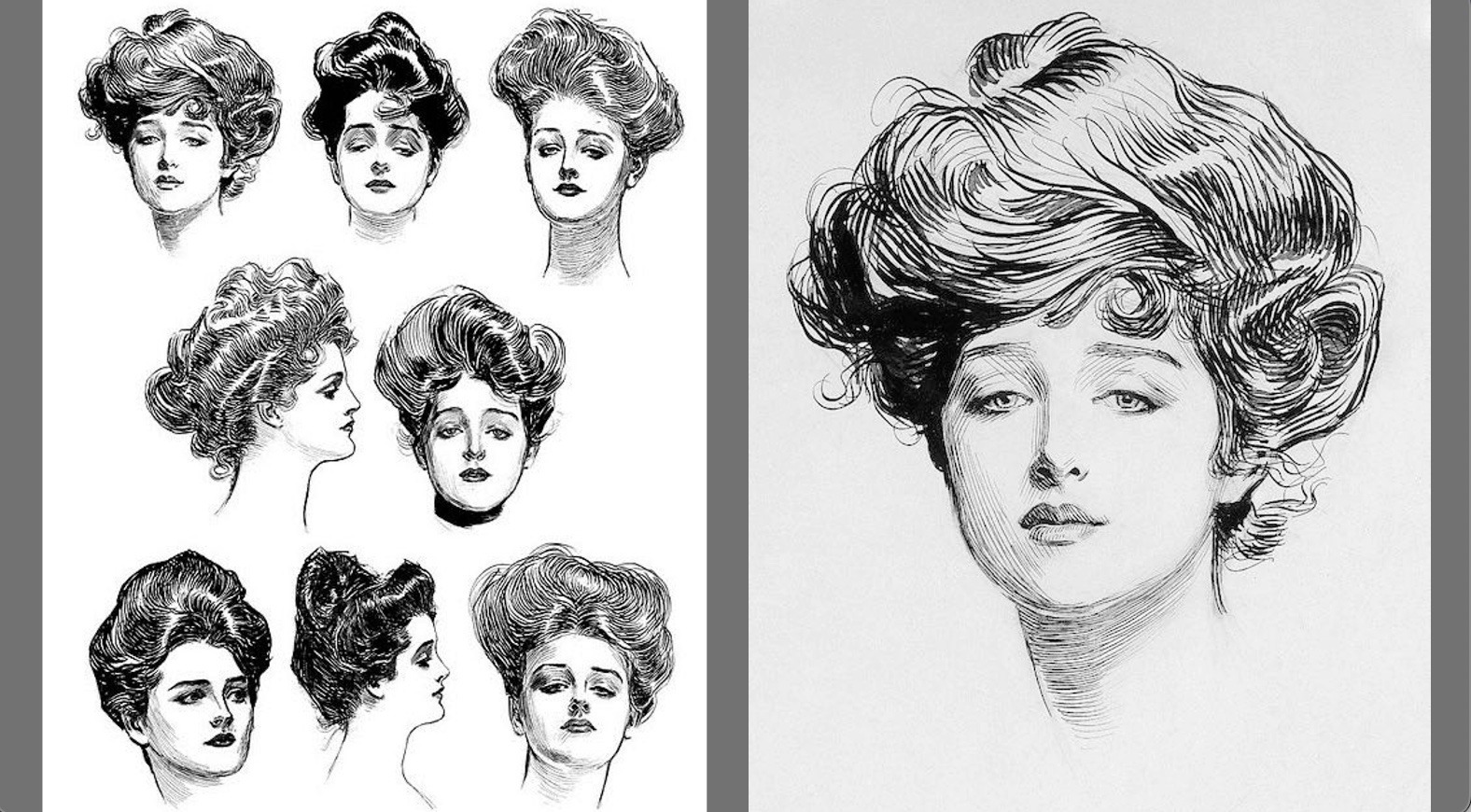
Charles Dana Gibson (1867-1944) – American
- Studied Fine Arts for 2 years
- Sold his first drawing for 4 dollars
- Was widely imitated
- Known for his “Gibson Girls”
🎓 Learn more about Charles Dana Gibson.
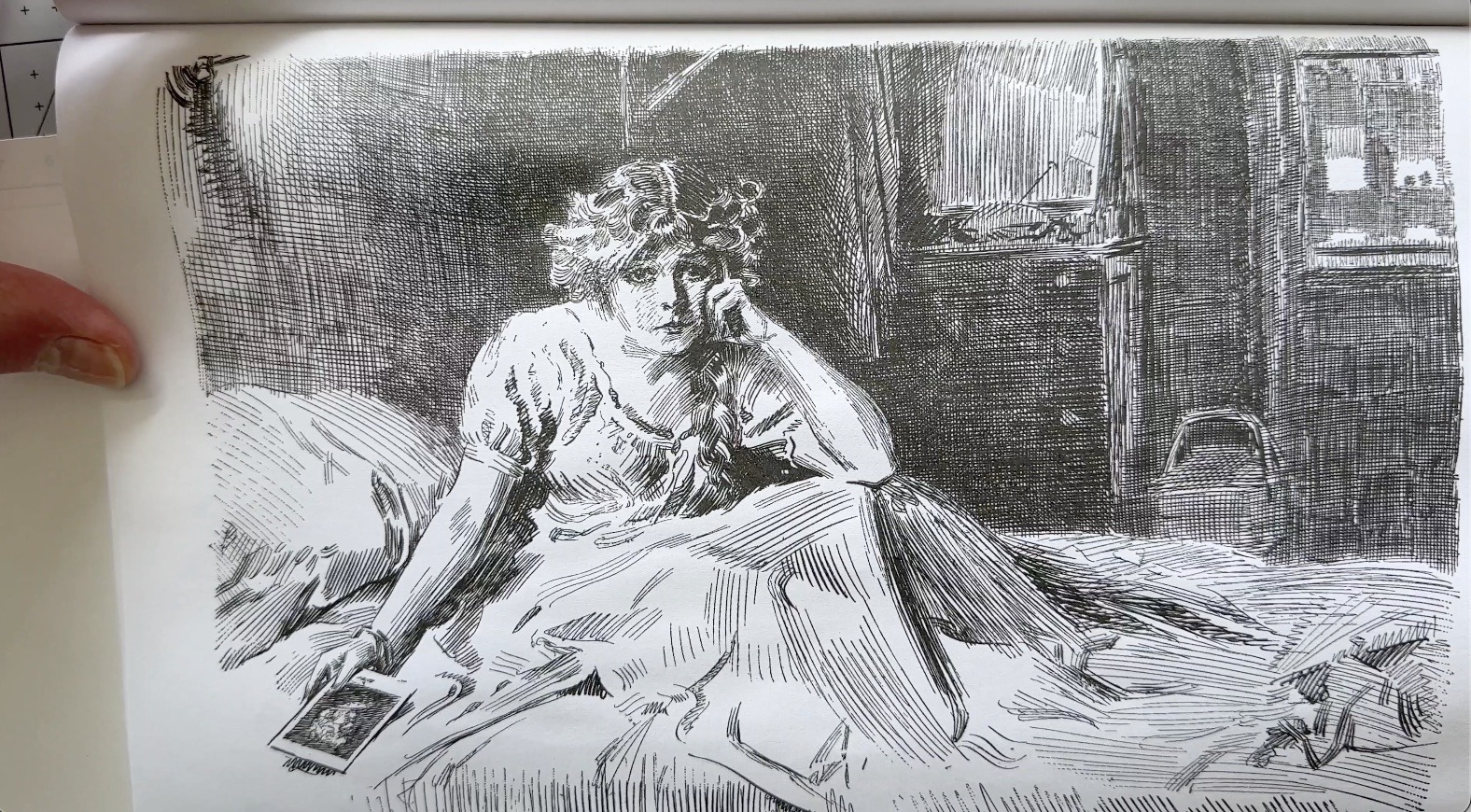
James Montgomery Flagg (1877-1960) – American
- Sold his first drawing at age 12
- Reported to have been the highest-paid magazine illustrator in America (at the time)
- Influenced by Charles Dana Gibson
- Known for this political poster “I Want You”
🎓 Learn more about James Montgomery Flagg.
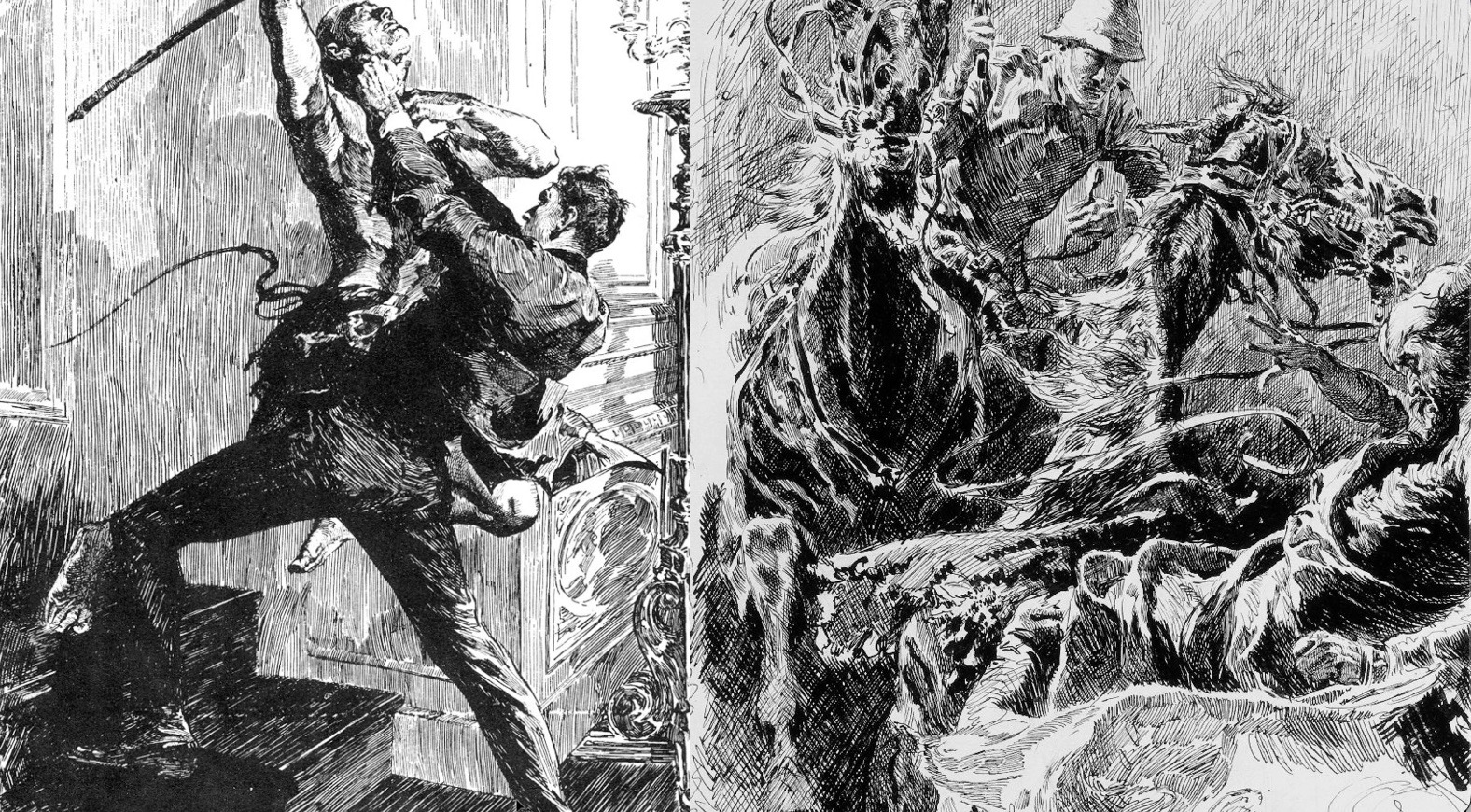
Joseph Clement Coll (1881-1921) Irish-American
- Took basic art courses in high school
- Began his illustration career at age 17
- Influenced by Spanish illustrator Daniel Verge
- Known for drawing from imagination
🎓 Learn more about Joseph Clement Coll.
Let’s talk about the common thread that shaped the quality of their skills.
Commonalities
1- All from the Golden Age era (1867-1960)
All three are from the ‘Golden Age’ era. It was a time when there was cultural progress, peace, prosperity, and happiness in society.
During this period, popular demand was for illustrations that realistically reflected everyday life.
Therefore, they drew similar subjects to appeal to the audience of that era.
2- All started work young
All began their illustration careers at an early age.
Their youth gave them the benefits of having time and the creative energy to overcome obstacles and grow their skill sets.
They learned art-making primarily on the job rather than strictly from academics.
Although they received some instruction from basic art education, they developed their illustration skills by studying the masters before them by trial and error.
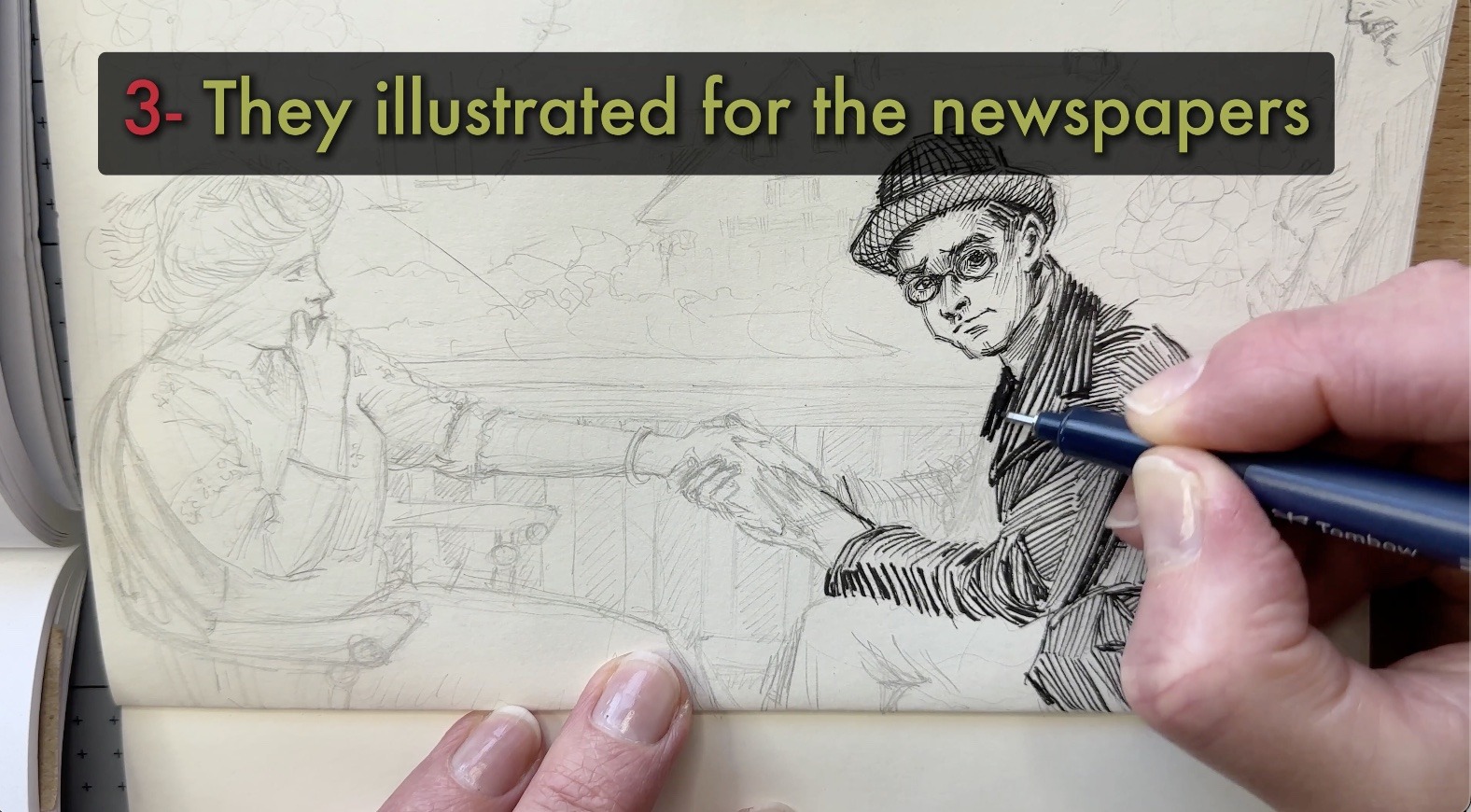
3- All did their formative years as illustrators working for a newspaper
Newspaper print quality was terrible in the early 1800s.
This meant that illustrations had to be rendered with thicker contour lines using fewer details and marks further apart. Without these adjustments, the images would print as black blobs.
Illustrating for the newspaper entailed:
- Creating elaborate drawings daily, under tight deadlines;
- Sketching subjects from observation at live events, then later inking them from memory; and
- Developing inking techniques that would reproduce on newsprint as the artist intended.
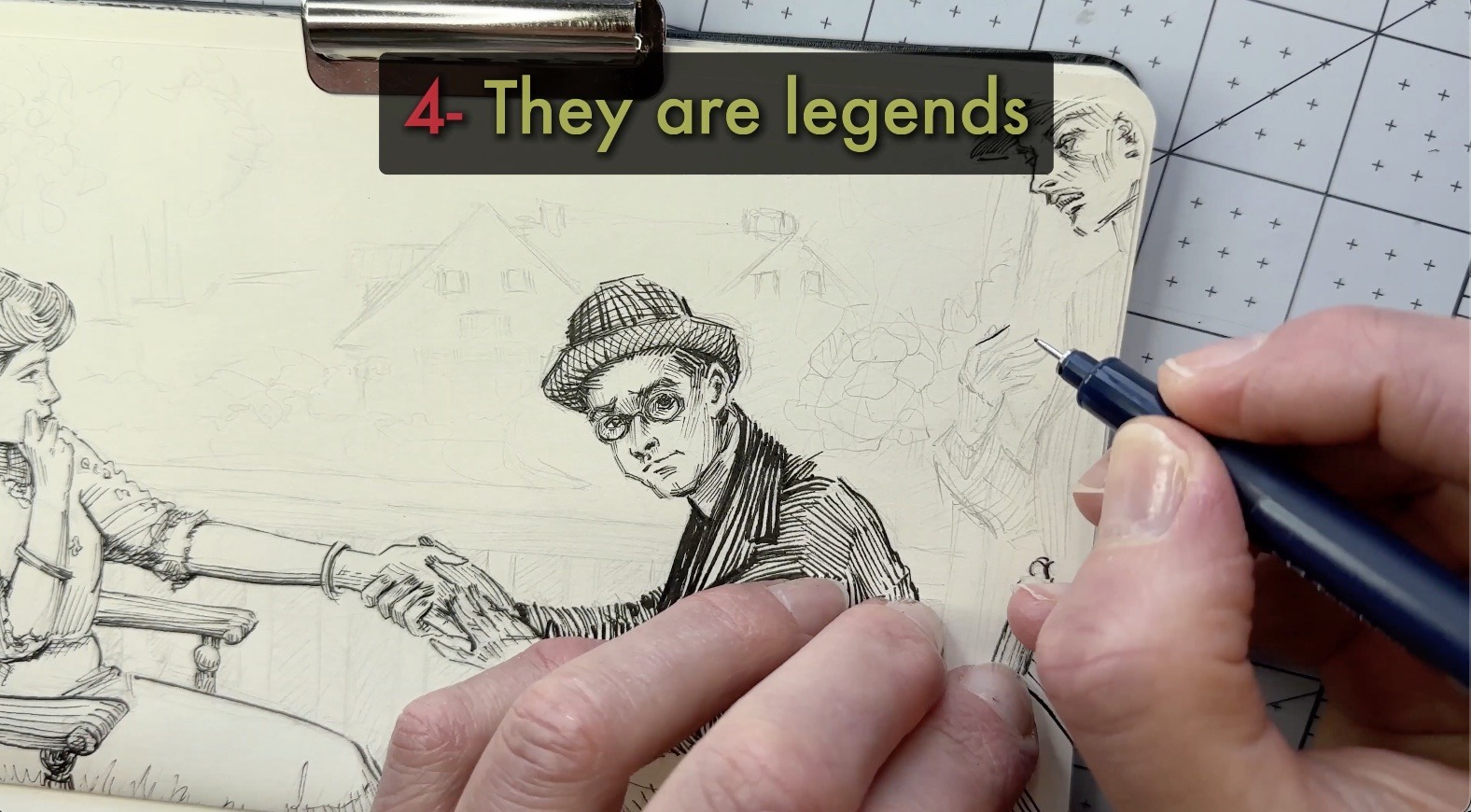
4- All became legends
Each master quickly progressed from the dailies to illustrating magazine work, posters and book illustrations. Their talents became renowned at the time and are today legendary.
In summary, the commonalities of these 3 masters were that:
- they started young
- developed drawing skills from observation
- honed inking techniques from daily practice
- rendered images that focused on storytelling
- depicted subjects that had a broad appeal to their audience
Those were a lot of commonalities, did anything set them apart?
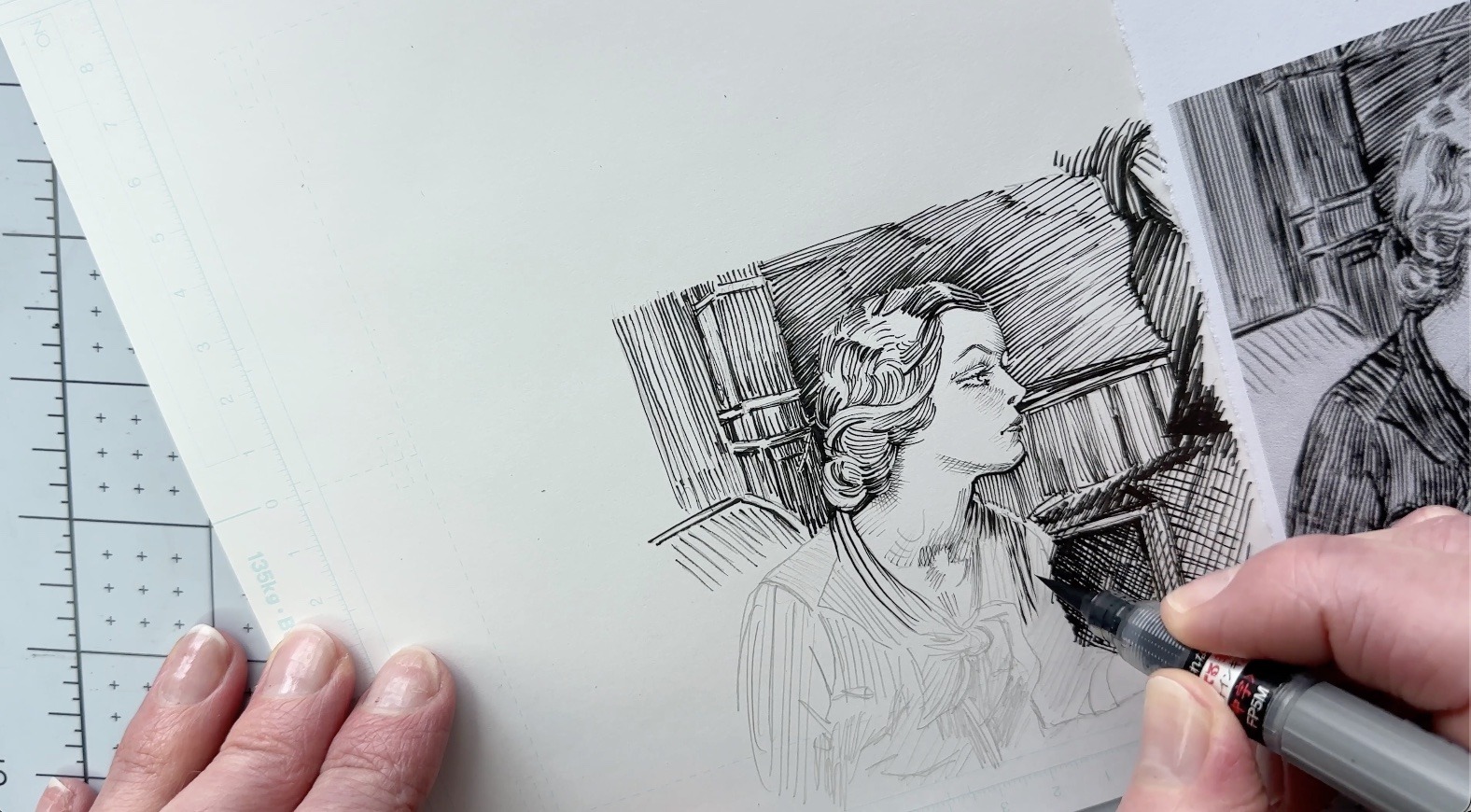
Distinctions Between the Masters
What set them apart… honestly, I studied their work and finding a distinction between the three was like comparing apples to apples.
At first glance, I could barely tell which is which.
What I observed:
- All three were exceptionally knowledgeable of the art fundamentals: Anatomy, proportions, perspective, composition
- Each had immense control of lighting and shading along with texturing techniques. Note the hatching direction and gradations for the hair, cloth, and objects. The values for those elements perfectly describe form, volume, movement, depth, and dimension.
They even used similar materials and techniques to render their illustrations.
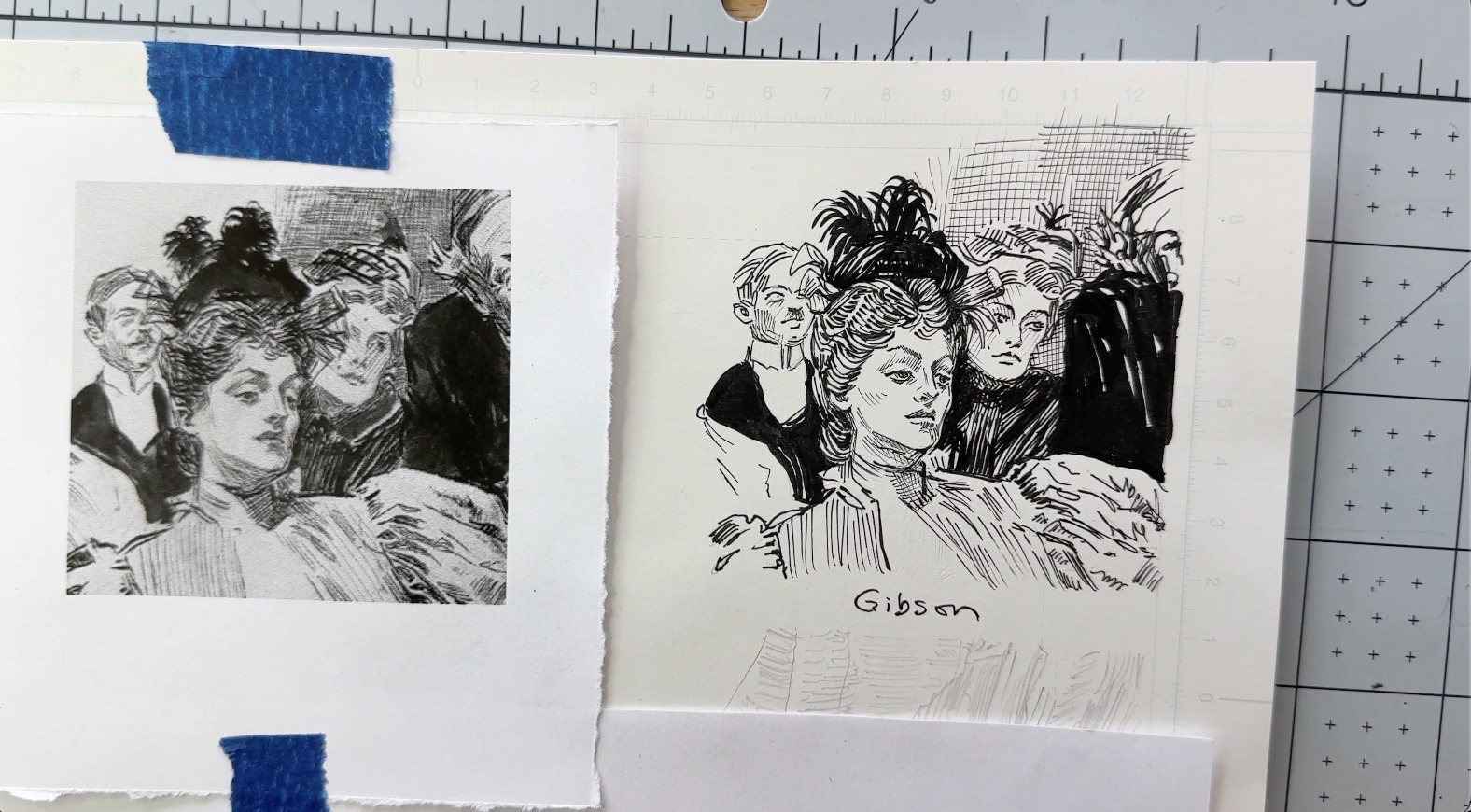
For the underdrawing stage they would:
- sketch the subject with a graphite pencil on paper,
- transfer the sketch by rubbing the back of the sketching paper with graphite, then;
- trace the sketch onto an illustration board.
🎥 To learn how to do a graphite transfer, check out my “Draw a Phoenix Tutorial” video on YouTube.
Once satisfied that the underdrawing had the right values they would ink it.
For the ink application, they would use:
- dip or fountain pens for hatching details,
- brushes for inking large areas of solids, then;
- sharp instruments to scratch out highlights (like using a scratchboard).
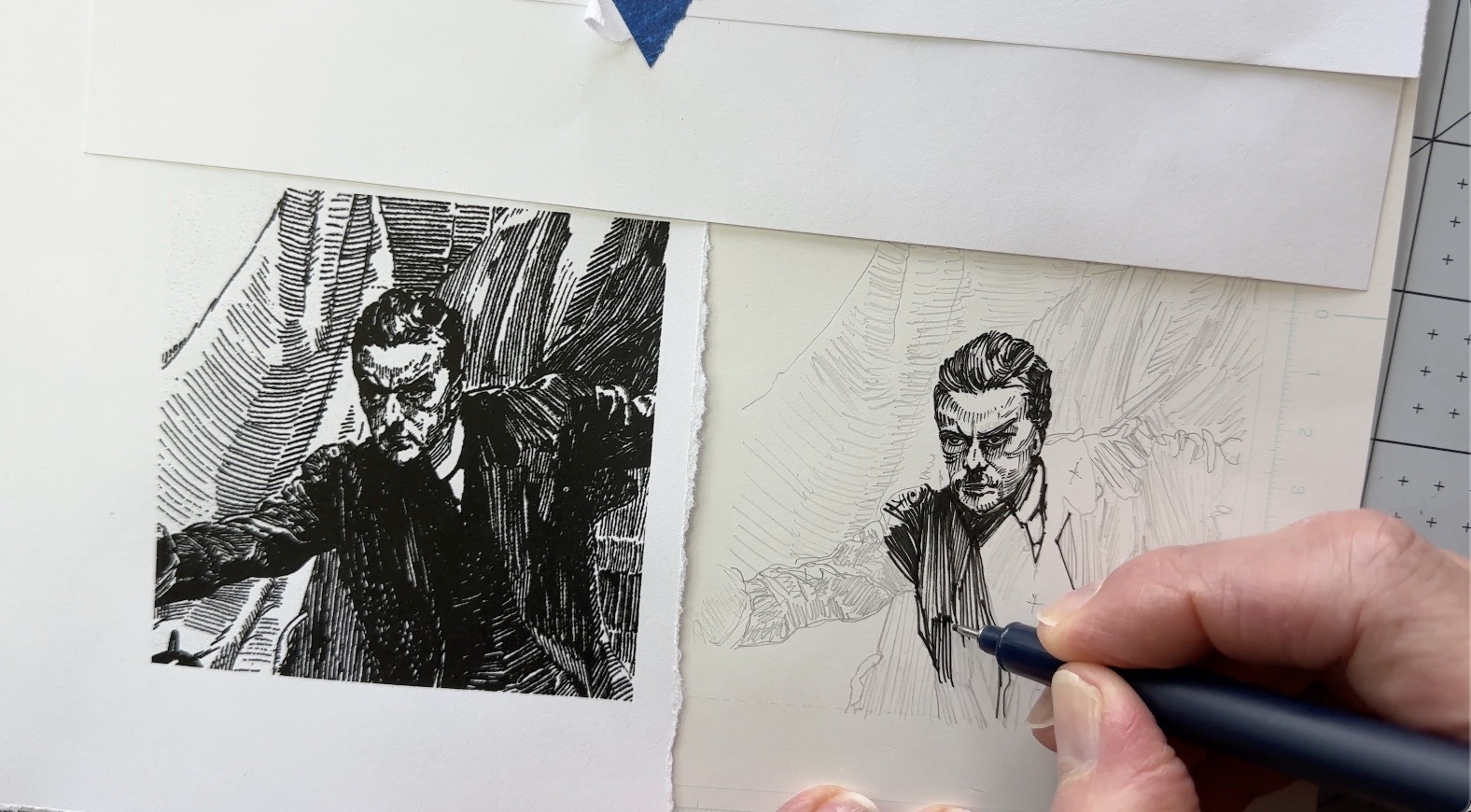
Experience the Difference
The best way to tell these apples apart is a taste test.
I inked a bite-size section from each master to taste the flavour of their illustrations.
My purpose was to discover what set them apart or what was unique to each.
So, what were the results of my taste test?
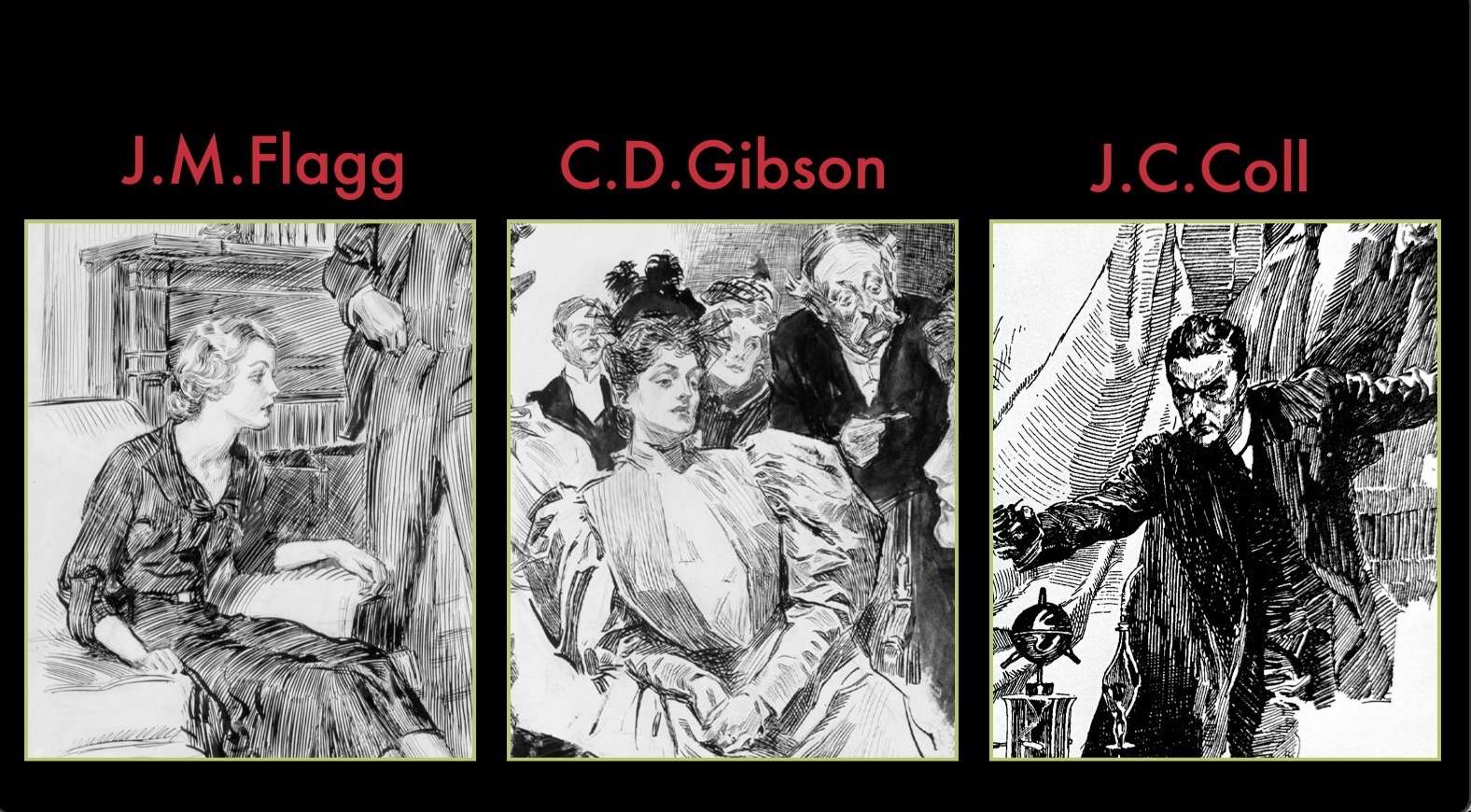
Lessons from the Golden Trio
Did I uncover a striking distinction between the three?
The answer is not really.
What I uncovered, the key takeaways from doing this exercise are:
Quantity, speed and simplicity can lead to quality.
The amount of practice they got from an early age, the demands of their jobs, and the limitations of print production contributed to how they developed their qualities.
Rather than methodically lay down each line with polish (like Franklin Booth), their approach was to capture the pose and the lighting. Then refine the linework gradually.
Studying this Golden Trio’s approach made me reflect on how to keep growing my skills.
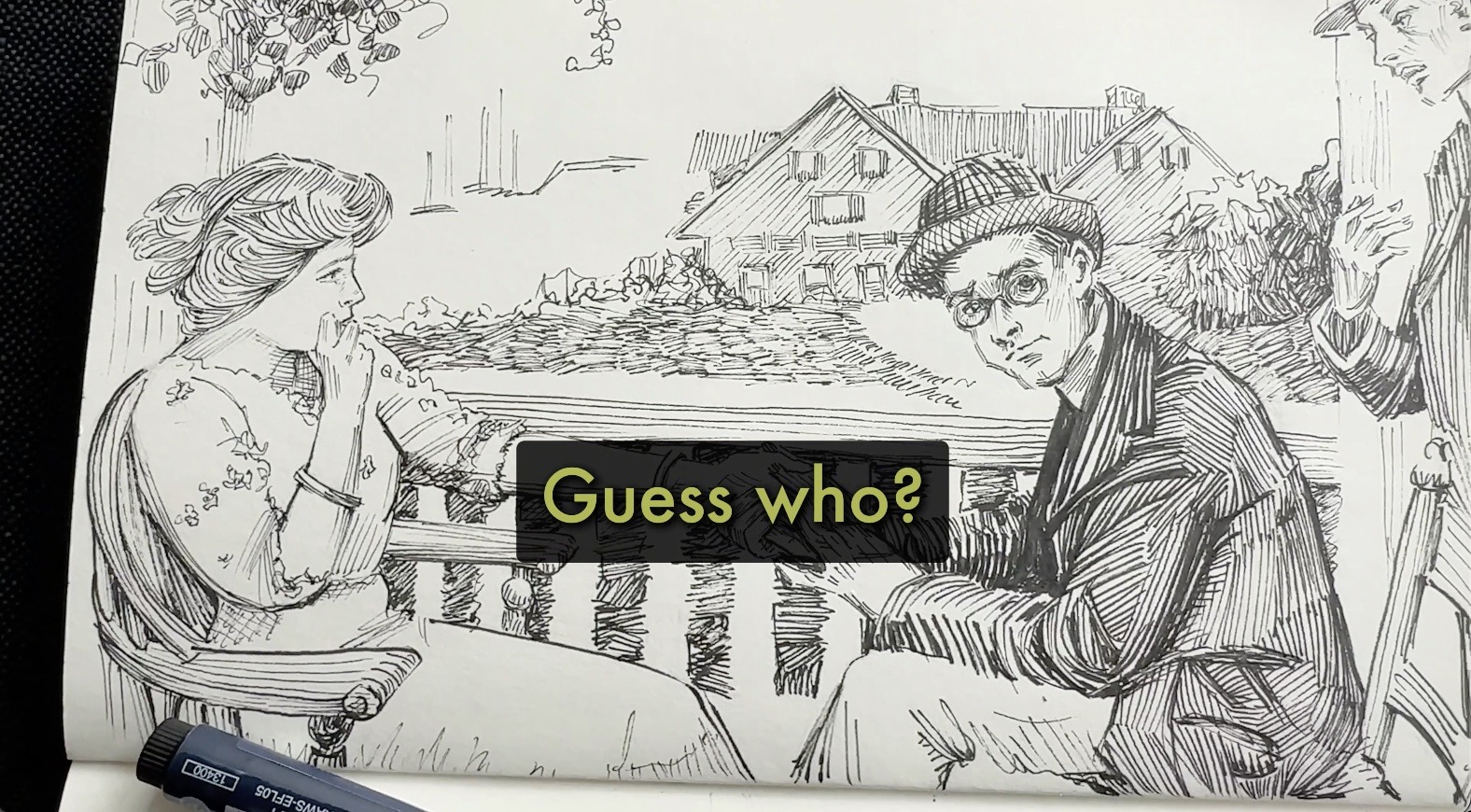
After doing this study of the three Golden Age illustrators, I’m more motivated to:
- Practice drawing more, as it leads to better inking in the end
- Focus less on precision and more on expression
- Draw more often from life than from photo references to build my memory
- Maybe take a refresher class on gesture drawing
- Schedule an outdoor sketching session at least once a week
- And to just go for it – fill my sketchbook without hesitation (less thinking, more doing)!

If this study inspired you, I created a master’s checklist template. Click on the button below to download it from my webshop.

Be sure to visit the links in the resources below for additional resources. ↓↓↓
Resources
✨Watch my Dip Pen Course Trailer (YouTube)
✨101 Great Illustrators from the Golden Age (Book)
✨Treasury of American Pen & Ink Illustration (Book)
TOOLS ↓↓↓

